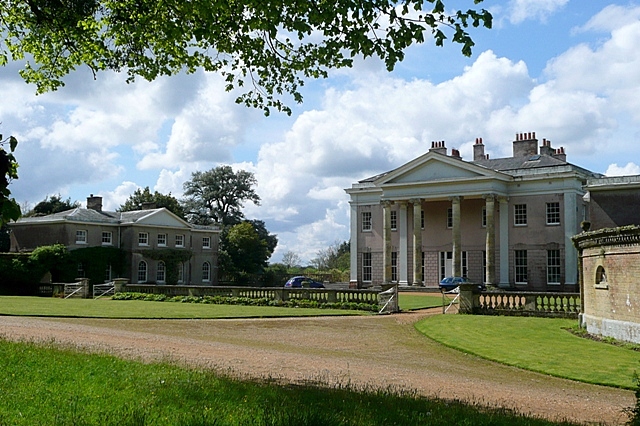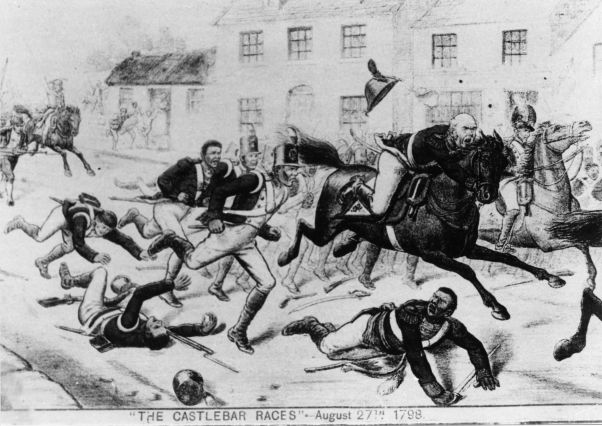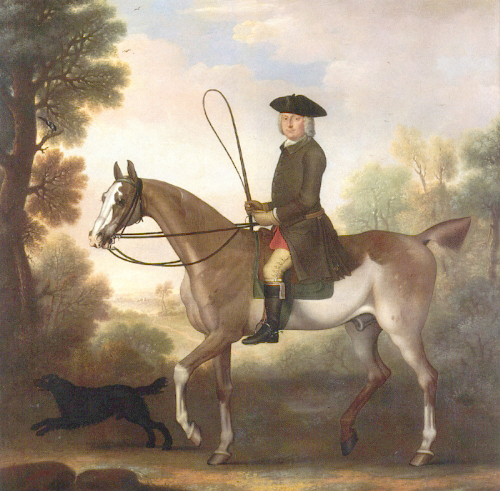|
Hale, Hampshire
Hale is a small village and civil parish in Hampshire, England. It lies on the border of the New Forest, overlooking the valley of the River Avon. The village is about north-east of the town of Fordingbridge, and about south of the city of Salisbury. Within the parish stands Hale House, a large 18th-century mansion which was the country house of architect Thomas Archer, who also rebuilt Hale church in 1717. Overview Hale is a village to the northeast of Fordingbridge in an area of woodland, to the east of the River Avon. It is a scattered community with some thatched cottages around the green, a village hall, and a Victorian school building which still houses the primary school. At the centre of the village is Hatchet Green, which is a Site of Special Scientific Interest and a Conservation Area.Hale Parish Co ... [...More Info...] [...Related Items...] OR: [Wikipedia] [Google] [Baidu] |
New Forest (district)
New Forest is a local government district in Hampshire, England. Its council is based in Lyndhurst. The district covers most of the New Forest National Park, from which it takes its name. The district was created on 1 April 1974, under the Local Government Act 1972, by the merger of the municipal borough of Lymington with New Forest Rural District and part of Ringwood and Fordingbridge Rural District. With its population estimated at 179,753 in mid-2018, New Forest is one of the most populated districts in England not to be a unitary authority. It was recommended by the Banham Commission to become one in 1995, but this was vetoed by the government of the day. Politics Elections to the council are held every four years, with all of the 60 seats on the council being elected at each election. From the 1999 election, the Conservatives have had a majority on the council, following a period of No overall control between 1991 and 1995, then Liberal Democrat control from 1995 to 199 ... [...More Info...] [...Related Items...] OR: [Wikipedia] [Google] [Baidu] |
North Charford
North Charford is a hamlet in the New Forest district, in Hampshire, England, near the Wiltshire border. Historically the name refers to a manor which is now in the civil parish of Breamore on the west bank of the River Avon. History North and South Charford are usually identified with the "Cerdic's ford" which appears twice in the ''Anglo-Saxon Chronicle''. It first is mentioned under the entry for the year 508 when we are told that following a battle to the east "the land as far as Cerdic's ford was named ''Natanleaga''" For the year 519 we are told that "Cerdic and Cynric succeeded to the kingdom West_Saxons.html" ;"title="f the West Saxons">f the West Saxons and in the same year they fought against the Britons at a place called Cerdic's ford". If a battle really did take place here then it is possible that the boundary of Hampshire was first established here. In the time of the Domesday Book of 1086, North Charford (''Cerdeford'') was a fairly large settlement of 29 househol ... [...More Info...] [...Related Items...] OR: [Wikipedia] [Google] [Baidu] |
Andrew Archer, 2nd Baron Archer
Andrew Archer, 2nd Baron Archer (29 July 1736 – 18 April 1778), 18th-century British Whig politician, styled the Hon. Andrew Archer between 1747 and 1768. Life The son of Thomas, 1st Baron Archer, by Catherine, daughter of Sir Thomas Tipping, 1st Baronet, he was educated at Eton College before going up to Trinity College, Oxford. In 1761 he was returned to Parliament for both Bramber and Coventry, but chose to sit for Coventry, which he represented until 1768 when he succeeded to his father's title and took his seat in the House of Lords. He inherited Umberslade Hall near Tanworth and served as Recorder of Coventry from 1769 until his death. Lord Archer died at Portman Square, Marylebone, London, in April 1778, aged 41, and was buried at Tanworth. His monument was sculpted by John Hickey.Dictionary of British Sculptors 1660-1851 by Rupert Gunnis p.200 He married Sarah, daughter of James West of Alscot Park, in 1761 and had one son and 4 daughters. His son predeceas ... [...More Info...] [...Related Items...] OR: [Wikipedia] [Google] [Baidu] |
Palladian Architecture
Palladian architecture is a European architectural style derived from the work of the Venetian architect Andrea Palladio (1508–1580). What is today recognised as Palladian architecture evolved from his concepts of symmetry, perspective and the principles of formal classical architecture from ancient Greek and Roman traditions. In the 17th and 18th centuries, Palladio's interpretation of this classical architecture developed into the style known as Palladianism. Palladianism emerged in England in the early 17th century, led by Inigo Jones, whose Queen's House at Greenwich has been described as the first English Palladian building. Its development faltered at the onset of the English Civil War. After the Stuart Restoration, the architectural landscape was dominated by the more flamboyant English Baroque. Palladianism returned to fashion after a reaction against the Baroque in the early 18th century, fuelled by the publication of a number of architectural books, including Pall ... [...More Info...] [...Related Items...] OR: [Wikipedia] [Google] [Baidu] |
Woodgreen
Woodgreen is a village and civil parish within the New Forest district of Hampshire in England. Overview Woodgreen lies between Breamore and Hale to the east of the River Avon.Hampshire Treasures Volume 5 (New Forest) Page 321 retrieved 2 October 2011 It is located due south of the city of , its nearest town is lying to the southwest. In the the parish was home to 537 people in 2 ... [...More Info...] [...Related Items...] OR: [Wikipedia] [Google] [Baidu] |
South Charford
South Charford is a hamlet in the New Forest district, in Hampshire, England. It is in the civil parish of Breamore on the west bank of the River Avon. History South and North Charford are usually identified with the "Cerdic's ford" which appears twice in the ''Anglo-Saxon Chronicle''. It first is mentioned under the entry for the year 508 when we are told that following a battle to the east "the land as far as Cerdic's ford was named ''Natanleaga''" For the year 519 we are told that "Cerdic and Cynric succeeded to the kingdom West_Saxons.html" ;"title="f the West Saxons">f the West Saxons and in the same year they fought against the Britons at a place called Cerdic's ford". If a battle really did take place here then it is possible that the boundary of Hampshire was first established here.Charford, Old Hampshire Gaze ... [...More Info...] [...Related Items...] OR: [Wikipedia] [Google] [Baidu] |
Anne, Queen Of Great Britain
Anne (6 February 1665 – 1 August 1714) was Queen of England, Scotland and Ireland from 8 March 1702 until 1 May 1707. On 1 May 1707, under the Acts of Union, the kingdoms of England and Scotland united as a single sovereign state known as Great Britain. Anne continued to reign as Queen of Great Britain and Ireland until her death. Anne was born in the reign of Charles II to his younger brother and heir presumptive, James, whose suspected Roman Catholicism was unpopular in England. On Charles's instructions, Anne and her elder sister Mary were raised as Anglicans. Mary married their Dutch Protestant cousin, William III of Orange, in 1677, and Anne married Prince George of Denmark in 1683. On Charles's death in 1685, James succeeded to the throne, but just three years later he was deposed in the Glorious Revolution of 1688. Mary and William became joint monarchs. Although the sisters had been close, disagreements over Anne's finances, status, and choice of acquaintances ar ... [...More Info...] [...Related Items...] OR: [Wikipedia] [Google] [Baidu] |
Groom Porter
The Groom Porter was an office at the royal court of the monarch of Britain, who had "the Inspection of the King's Lodgings, and takes care that they are provided with Tables, Chairs, Firing, &c. As also to provide Cards, Dice, &c. when there is playing at Court: To decide Disputes which arise in Gaming". He was also responsible for "oversight of common Billiards Tables, common Bowling Grounds, Dicing Houses, Gaming Houses and Common tennis Courts and power of Licensing the same within the Citys of London and Westminster or Borough of Southwark."'Hunting, sporting and gaming: Groom Porters and Masters of the Tennis Courts', ''Office-Holders in Modern Britain: Volume 11 (revised): Court Officers, 1660-1837'' (2006), pp. 224–225porter Date accessed: 7 November 2008. The title may originally have referred to the keeper of the king's furnishings in his bedchamber. It was a position in the royal household, and therefore had certain privileges associated with it. In 1702 the remunera ... [...More Info...] [...Related Items...] OR: [Wikipedia] [Google] [Baidu] |
Castlebar
Castlebar () is the county town of County Mayo, Republic of Ireland, Ireland. Developing around a 13th century castle of the de Barry family, de Barry family, from which the town got its name, the town now acts as a social and economic focal point for the surrounding hinterland. With a population of 12,318 in the 2011 census of Ireland, 2011 census (up from 3,698 in the 1911 census of Ireland, 1911 census), Castlebar was one of the fastest growing town in Ireland in the early 21st century. A campus of Atlantic Technological University and the National Museum of Ireland – Country Life, Country Life section of the National Museum are two important facilities in the area. The town is rail transport in Ireland, linked by railway to Dublin, Westport, County Mayo, Westport and Ballina, County Mayo, Ballina. The main route by road is the N5 road (Ireland), N5. History The modern town grew up as a settlement around the de Barry family, de Barry castle, which was built by a Norman ... [...More Info...] [...Related Items...] OR: [Wikipedia] [Google] [Baidu] |
Thomas Gage, 1st Viscount Gage
Thomas Gage, 1st Viscount Gage (c. 1695 – 21 December 1754) of High Meadow, Gloucestershire and later Firle Place, Sussex, was a British landowner and politician who sat in the House of Commons as a Whig for 33 years between 1717 and 1754. Early life Gage was the eldest son of Joseph Gage of Shirburn Castle and Elizabeth Penruddock, the daughter and heiress of Sir George Penruddock. He succeeded his father-in-law to High Meadow in 1714. He converted to the Church of England in 1715, perhaps to enable him to sit in parliament. Alden (1948), pp. 5,8 Career Gage was elected Member of Parliament for Minehead at a by-election on 11 April 1717, but was unseated on petition on 23 May 1717. On 14 September 1720, King George I created him Baron Gage of Castlebar in the county of Mayo, and Viscount Gage of Castle Island in the county of Kerry of the Kingdom of Ireland. Although styled as Viscount and eligible to sit in the Irish House of Lords, this did not prevent him from sit ... [...More Info...] [...Related Items...] OR: [Wikipedia] [Google] [Baidu] |
Country Life (magazine)
''Country Life'' is a British weekly perfect-bound glossy magazine that is published by Future plc. It was based in London at 110 Southwark Street until March 2016, when it became based in Farnborough, Hampshire. History ''Country Life'' was launched in 1897, incorporating ''Racing Illustrated''. At this time it was owned by Edward Hudson, the owner of Lindisfarne Castle and various Lutyens-designed houses including The Deanery in Sonning; in partnership with George Newnes Ltd (in 1905 Hudson bought out Newnes). At that time golf and racing served as its main content, as well as the property coverage, initially of manorial estates, which is still such a large part of the magazine. Elizabeth Bowes-Lyon, the late Queen Mother, used to appear frequently on its front cover. Now the magazine covers a range of subjects in depth, from gardens and gardening to country house architecture, fine art and books, and property to rural issues, luxury products and interiors. The fr ... [...More Info...] [...Related Items...] OR: [Wikipedia] [Google] [Baidu] |
Inigo Jones
Inigo Jones (; 15 July 1573 – 21 June 1652) was the first significant architect in England and Wales in the early modern period, and the first to employ Vitruvian rules of proportion and symmetry in his buildings. As the most notable architect in England and Wales, Jones was the first person to introduce the classical architecture of Rome and the Italian Renaissance to Britain. He left his mark on London by his design of single buildings, such as the Queen's House which is the first building in England designed in a pure classical style, and the Banqueting House, Whitehall, as well as the layout for Covent Garden square which became a model for future developments in the West End. He made major contributions to stage design by his work as theatrical designer for several dozen masques, most by royal command and many in collaboration with Ben Jonson. Early life and career Beyond the fact that he was born in Smithfield, London, as the son of clothworker Inigo Jones Snr., and ... [...More Info...] [...Related Items...] OR: [Wikipedia] [Google] [Baidu] |








